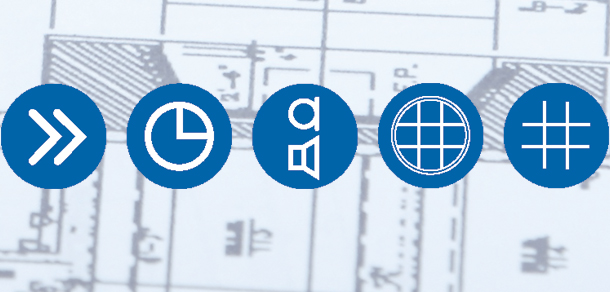Physical access control in new construction
Starting from scratch opens doors for cloud-based access, wireless locksets and more
10 August, 2016
category: Contactless, Corporate, Financial, Government, Smart Cards
Constructing a new office building from scratch presents a unique opportunity to deploy the latest and greatest in physical access control. Companies can leapfrog technologies – jumping from old janitor-size key rings to wireless entry, biometric access points and cloud-based security. Administrators can grant or deny access from anywhere at anytime and via any networked device. And with modern systems there’s less of a need for on-premise infrastructure, which ultimately means lower costs for end users.
But to take advantage of this opportunity afforded via new construction, companies need to address key issues up front to maximize their physical access control capabilities and stay ahead of the ever-changing security technology.
“You need to make sure to install a system that’s future-proof,” says Pat Barry, CEO of BluB0x, a company that specializes in cloud-based physical access control systems.
For new buildings, One of the most significant changes with physical access control is the way they’re wired – or not wired.
Barry suggests that systems deployed in new buildings should strive to incorporate technologies that the security industry will be using for the next 15 years. He advises clients to choose access control systems that embody three adjectives – unified, open and smart – and three nouns – cloud, mobile and biometrics.
Companies planning a new building might be tempted to fall into old habits, opting for a completely hard-wired system or traditional security communication protocols like Wiegand. But security providers are encouraging companies to break out of that comfort zone to get the most out of a new system.
To do that requires a bit of front-end planning. Brad Aikin, commercial electronics business leader for security products provider Allegion, says that too often companies design and build a new space first and then address security as an afterthought. He says physical access control should be part of the initial discussion on how the space will be designed and used, and companies should plan for physical access control installation along with the build-out of other systems, such as IT infrastructure.
“If they think of physical access control as a service within that ecosystem, it can really optimize not only the cost of providing security, but the ability to use that information to effectively manage the rest of the space,” Aikin says.
New access control delivers both convenience and security
Next-gen physical access control systems are designed to offer security without forgoing user convenience. “We’ve moved away from providing security at the expense of convenience,” Barry says. “With today’s technology you can have both.”
One of the most significant changes with physical access control systems is the way they’re wired – or not wired. There are more options available for wireless components, such as locks and readers, and in many cases there’s no server anymore as the cloud has replaced it, explains Aikin.
That means less infrastructure is necessary, which translates to lower up-front costs because there isn’t as much equipment to install on site. “The cost to install and manage that access point has been reduced significantly based on advancements in technology,” he says.
With wireless door locks becoming more prevalent, many doors – even networked ones – can be part of a wireless network and no longer need to have individually wired connections, explains Steve Van Till, CEO and founder of security systems provider Brivo, Inc. More readers and controllers are being consolidated inside these locks, meaning fewer pieces of equipment are needed. “You’re reducing the footprint you need to get security,” Van Till says.
Eliminating the expense, workload and damage that come with pulling wire to various doors and locations throughout a building makes it feasible to put electronics on more interior doors than in the past. This gives tenants the ability to use the same credential for perimeter doors as for interior doors, versus having an electronic credential for outside doors and a key for inside doors.
“There’s still a place where keys have a fit, but the electronic credentials that already exist for the perimeter can now be applied on the interior and generally reduce operating costs for property managers,” Aikin says.
Today’s physical access control systems are shifting toward network cabling and away from dedicated security wiring. Instead of having a large, centralized control panel in a closet with heavy wiring going to all end points, new systems are doing away with the bulky control panel in favor of edge devices with network cabling connected to all doors. As a result, it’s becoming more common for companies to bring in networking companies to run the cable for physical access control systems rather than relying solely on a security company, Van Till says.





